Duck hunting in Oklahoma is a tradition that draws locals and visitors alike. With its diverse wetlands, lakes, and rivers, the state provides an ideal habitat for numerous duck species, making it a sought-after destination for waterfowl enthusiasts. Oklahoma offers hunting opportunities on public and private lands, creating opportunities for hunters of all experience levels.
During hunting season, which typically runs from late fall to early winter, hunters can target various species, including mallards, pintails, teal, gadwalls, wigeons, and more. These migratory birds go through the state, living in the abundant wetlands.
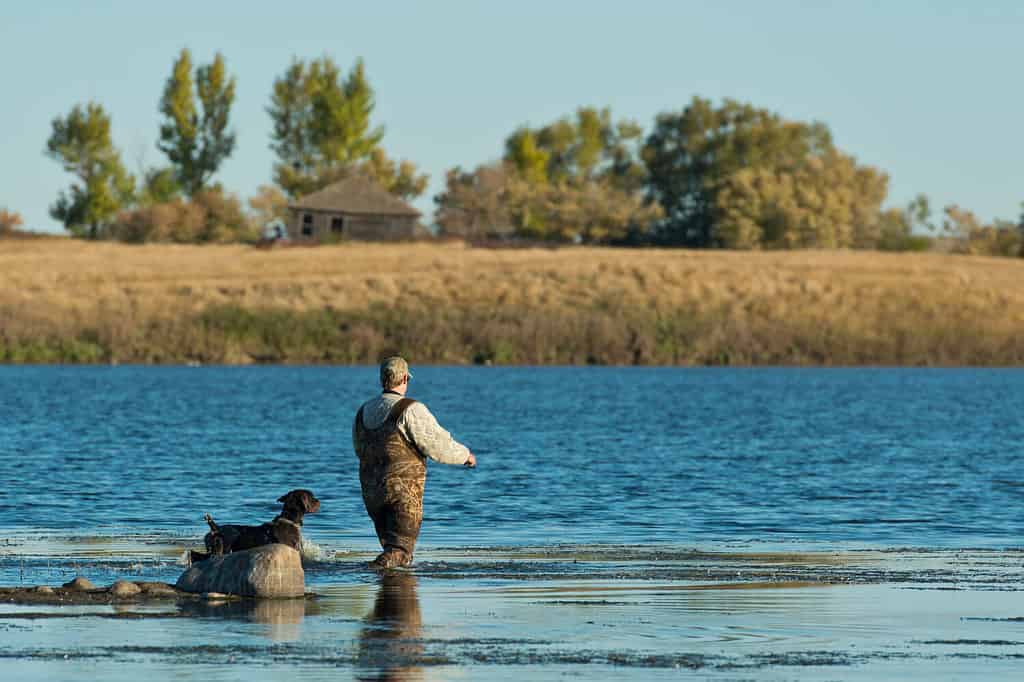
Duck hunting season typically runs from late fall to early winter.
©Steve Oehlenschlager/Shutterstock.com
People know Oklahoma for its big game and small game hunting opportunities. From trophy whitetail deer to elk, bear, and antelope to turkey, squirrels, woodcock, and rail, Oklahoma’s a hunter’s paradise.
People consider Oklahoma a transition zone between wetter forested lands and the arid plains of the West. It is in the heart of the Great Plains. The state’s topography includes forests, mountains, prairies, rivers, lakes, canyons, and mesas.
In this article, we will go over season dates, bag limits, and more for hunting season in Oklahoma.
Season Dates
Located at the southern portion of the Central Flyway, Oklahoma, it is part of the wintering range for many species of ducks and geese. This allows athletes to pursue their feathered quarry from November through January.
Obtaining a License
In Oklahoma, the state requires you to obtain the necessary licenses and permits for hunting. Here are the essential support and tickets you will need:
- Hunting License: All hunters, including hunters, must possess a valid hunting license issued by the Oklahoma Department of Wildlife Conservation (ODWC). The license allows you to hunt various game species within the state, including ducks.
- Federal Duck Stamp: A valid one is mandatory for all waterfowl hunters aged 16 and older. The Federal Duck Stamp can be purchased at many post offices and online, proving your contribution to waterfowl conservation efforts.
- Oklahoma Waterfowl License: In addition to the hunting license, waterfowl hunters in Oklahoma must purchase a specific Waterfowl License. This license is required to hunt ducks, geese, and other waterfowl species within the state.
- Harvest Information Program (HIP) Permit: Waterfowl hunters must also obtain a HIP permit, a free permit that provides valuable data to wildlife agencies for managing waterfowl populations. The HIP permit can be obtained online or by phone through the ODWC.
How long does Duck Season last in Oklahoma?
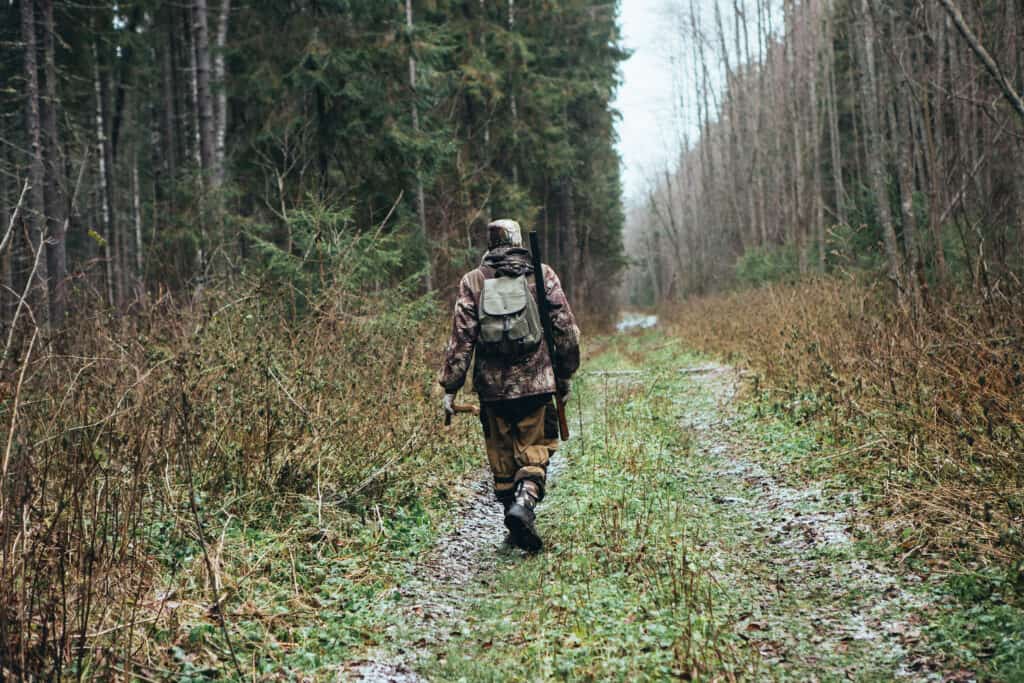
Duck hunting has a reputation for being gear heavy, but it doesn’t have to be.
©Scharfsin/Shutterstock.com
Hunting season dates for ducks, mergansers, and coots are the same this year in Zones 1 and 2, which make up all of Oklahoma except for the Panhandle. The 2021-22 duck season runs from Nov. 13-28 and Dec. 4 to Jan.
What is the Duck Limit in Oklahoma?
Ducks: Daily bag limit: 7, which may contain seven mallards, but up to two female mallards or Mexican-like ducks; 1 pintail; 2 canvasback; 2 redheads; 2 scaup. Geese: Daily bag limit: 24, containing 20 white geese; up to 4 may be dark geese. Possession limit ducks and geese: Triple the daily bag limit.
What Months Are the Best for Duck Hunting?
October. This is the best month, period. October weather is usually sparkling, the leaves are changing, and you can hunt ducks and geese from Canada south to about the middle of the United States.
Is it Illegal to Bait Ducks in Oklahoma?
It is a separate offense to place or direct bait placement on or adjacent to an area that causes, induces, or allows another to hunt with bait on or over a baited area. Hunters are responsible for ensuring that a site has not been baited and should verify its legality before pursuing it.
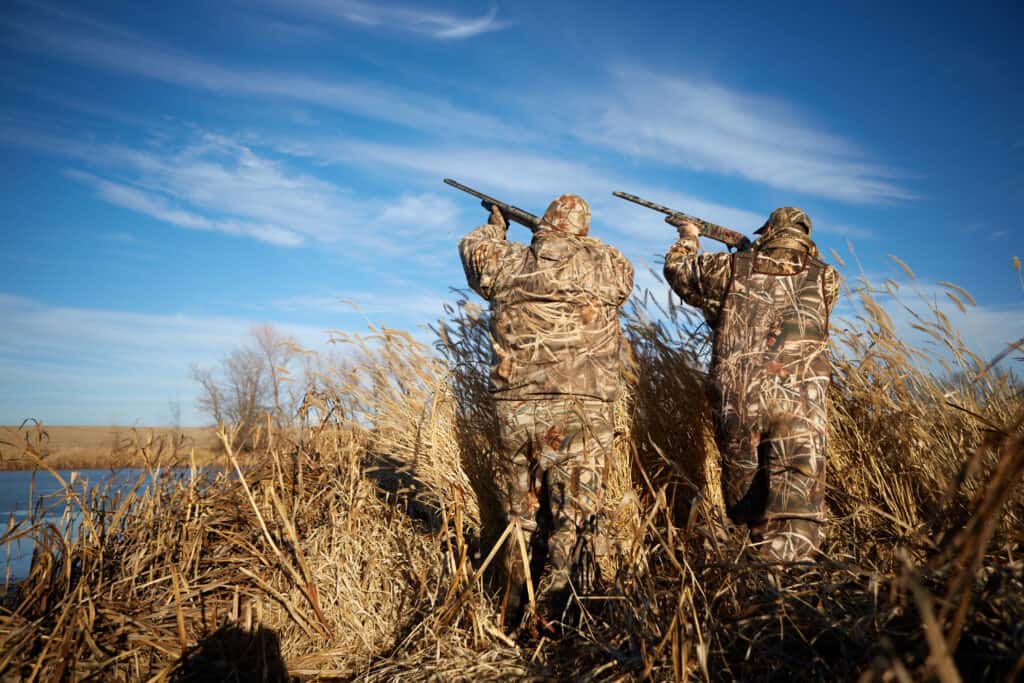
Hunters may take six ducks combined daily, but up to five mallards.
©CLP Media/Shutterstock.com
How many Ducks can you shoot in a day in Oklahoma?
Hunters may take six ducks combined daily, but up to five mallards (only two may be hens), three wood ducks, two redheads, two canvasbacks, one scaup, and one pintail. Mergansers are now included in the daily limit.
What Time of Day Should You Duck Hunt?
It is believed that the best time to hunt for waterfowl is during the first hours of the morning after dawn.
Is Oklahoma a Good Duck-hunting State?
Oklahoma boasts some of the best Mallard duck hunting in the United States. We are located in Southwest Oklahoma along the Red River, a significant migration corridor.
Hunter Education
Embarking on a hunting journey often begins with a crucial step: enrolling in a hunter’s safety course. While certain states may not mandate hunter education for purchasing a hunting license based on age criteria, undertaking the study and obtaining certification is highly advisable. There are two primary reasons for this: Firstly, if you plan to explore hunting opportunities in other states, you may encounter requirements where hunters of all ages must possess a hunter’s safety card. Secondly, the course equips you with essential knowledge on proper firearm handling and hunting safety practices, ensuring a responsible and secure hunting experience. By enrolling in a hunter’s safety course, you not only meet potential future obligations but also gain invaluable skills that promote the well-being of both yourself and fellow hunters.
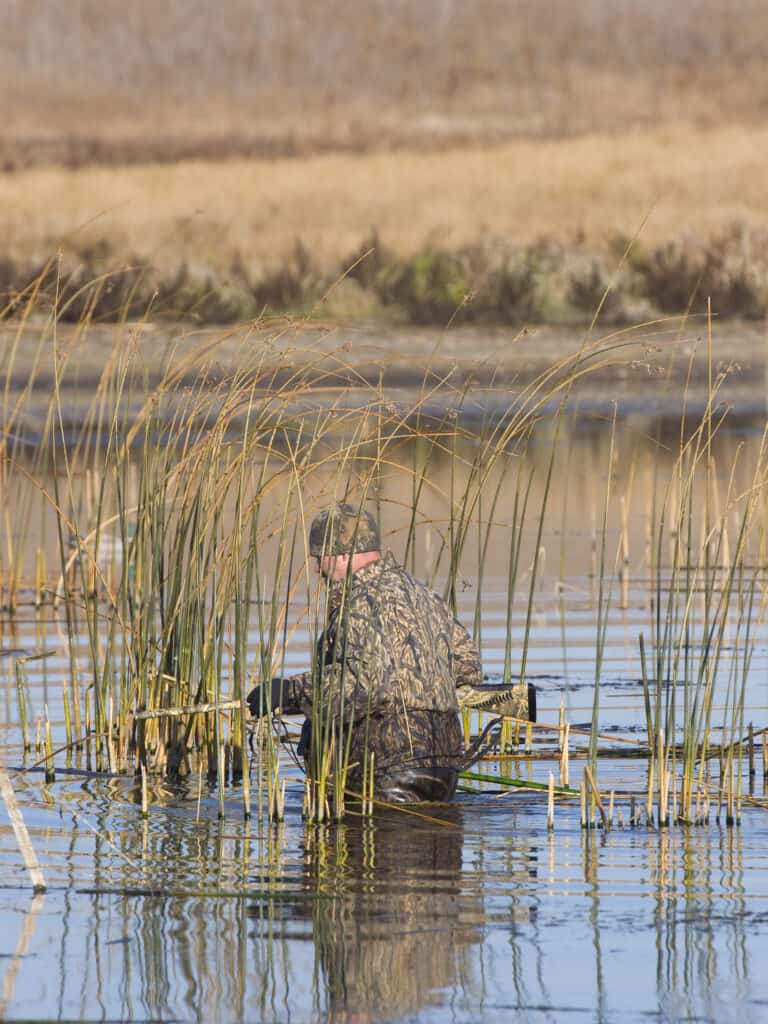
To
hunt ducks
legally, you must obtain a hunting license and a state and federal duck stamp.
©Steve Oehlenschlager/Shutterstock.com
The Duck Stamp
To hunt ducks legally, you must obtain a hunting license and a state and federal duck stamp. The sale of federal duck stamps directs 98% of the funds towards acquiring and safeguarding wetland habitats and conservation easements for the National Wildlife Refuge system. Your participation in purchasing these stamps protects waterfowl habitats, making it one of North America’s most successful conservation programs.
Hunting with a Duck Dog
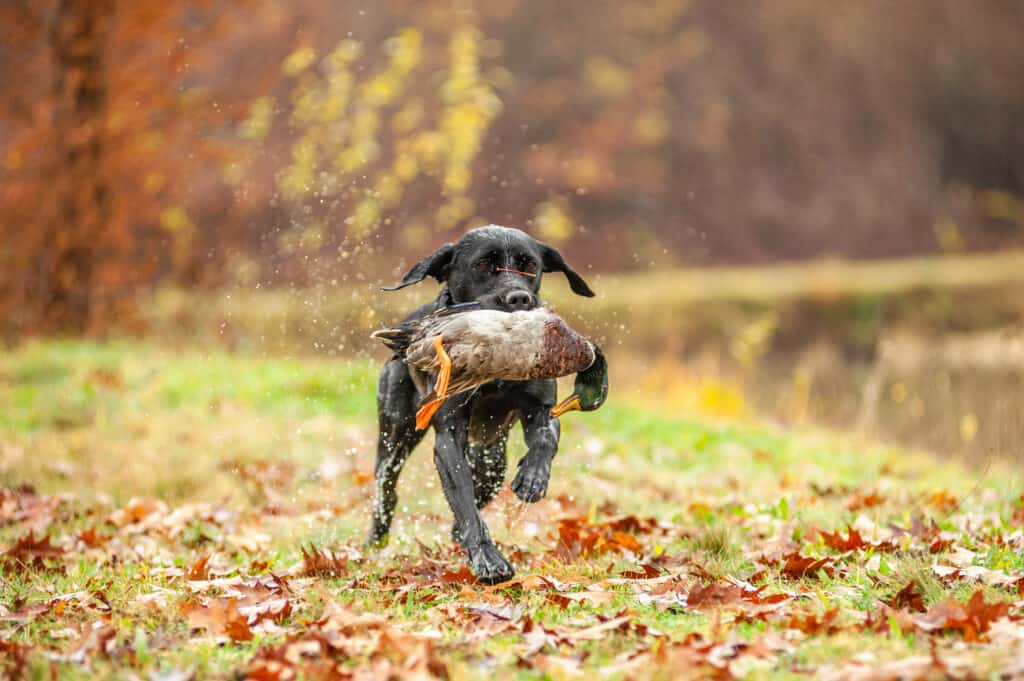
Dogs are hunters by nature, which is one reason they like toys so much.
©Anna Pozzi – Zoophotos/Shutterstock.com
A well-trained retriever enhances hunting joy by effectively recovering downed birds. They excel at marking and tracking, reducing the number of lost ducks. Retrievers also provide access to otherwise inaccessible areas and swiftly retrieve multiple birds. Popular breeds include Labrador retrievers, Chesapeake Bay retrievers, and golden retrievers. Safety is crucial, so carry a first-aid kit and ensure control over your dog. Consider weather conditions and hydration. Regularly check for injuries and adapt activities as your dog ages. Hunting with a trained retriever deepens the hunting experience and fosters a strong bond between hunter and companion.
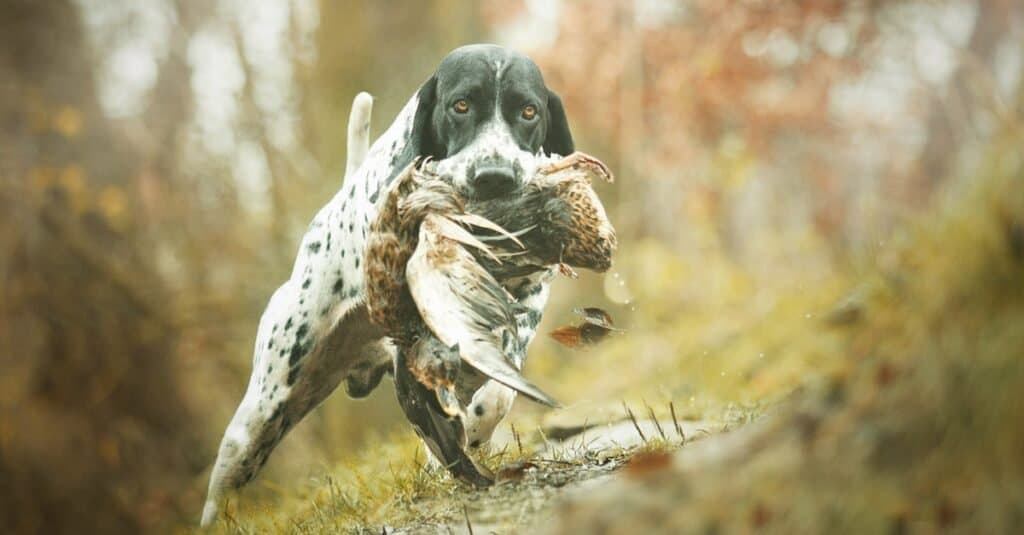
Hunting with a dog deepens the hunting experience and fosters a strong bond between hunter and companion.
©Best dog photo/Shutterstock.com
Migratory Bird Laws
Navigating the complex web of federal and state migratory bird laws can be challenging for new hunters. The Migratory Bird Act of 1918 safeguards waterfowl species, but its guidelines for legal take can be perplexing. Understanding the distinctions between federal and state regulations is crucial. For instance, federal law allows disposing of a retrieved bird as long as it’s not wasted, while many states require producing specific parts. Another federal law prohibits manipulating crops and hunting over them; even accidental actions like crushing a corn kernel or knocking off a seed head can be deemed violations.
It’s common to feel bewildered; even seasoned hunters encounter rules they may need to comprehend fully. To familiarize yourself with the legal framework, consult federal and state regulations for your hunting location. Reach out to your state game agency for clarification on any uncertainties you may have. In this article, a former waterfowl guide’s encounter with law enforcement sheds light on the majority of legal issues faced by hunters. Stay informed and ensure compliance with the applicable regulations to enjoy a successful and lawful duck hunting experience.

Duck decoys are used for hunting.
©iStock.com/Vershinin
When to Shoot a Duck
Accurately determining the appropriate shooting distance for ducks can be challenging. Understanding their behavior is critical. Ducks often circle before landing, so avoid shooting when they pass directly over you. Allow them to work and slow down, presenting an easier shot in front of the decoys. When a duck approaches head-on, please wait until you can see its eyeball before firing to ensure proper lead.
Experience plays a vital role in judging shot distance. New hunters may misjudge a duck’s proximity and take premature shots. Remember, ducks can be effectively targeted up to 40 yards and may not come any closer. Assess your shot opportunity quickly, considering the percentages, and decide within seconds. It’s a challenging task, but with more hunting experience, it becomes easier. Consider bringing a rangefinder to determine a landmark, such as a decoy, stump, or clump of grass, at 40 yards and avoid shooting beyond that point.
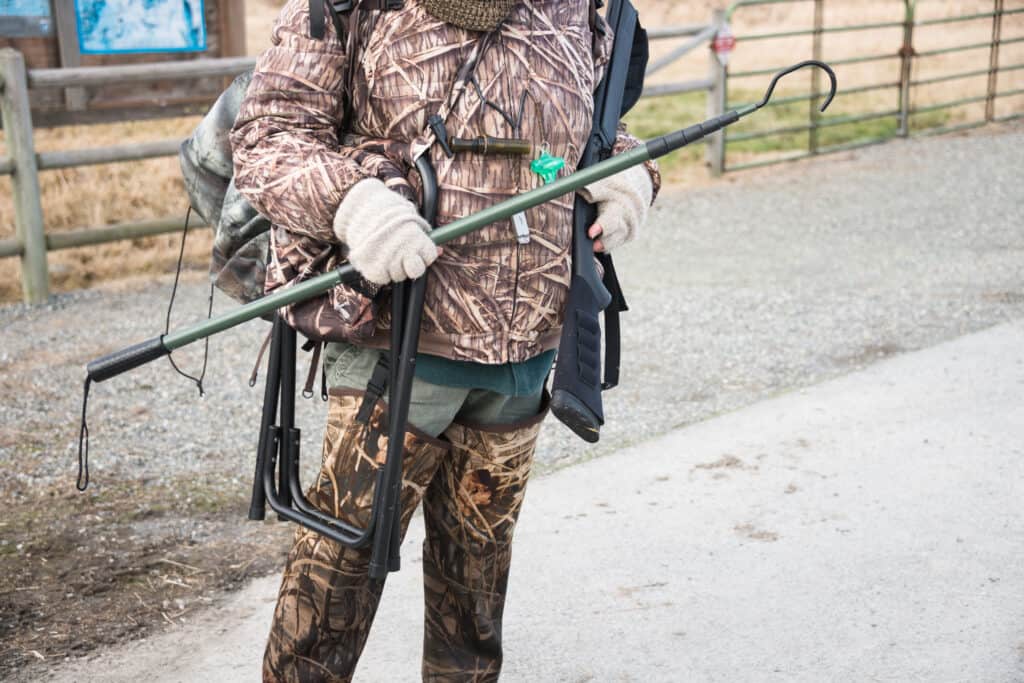
The right gear can make a big difference between a miserable cold, wet, duckless day and a well-prepared exciting day of meeting your bag limit.
©Denise Lett/Shutterstock.com
How to Scout for Ducks
Scouting is the ultimate key to hunting success. Experienced hunters prioritize scouting over actual hunting, as it allows them to understand bird patterns and behaviors, leading to better outcomes. Most species, including divers and sea ducks, roost overnight on larger watersheds or form large rafts on open water. However, you can also find ducks roosting on smaller bodies of water. In the morning and evening, ducks venture out to feed. This is the critical time to be in your truck, actively scouting for their flight paths and feeding areas.
Fun Facts about Ducks
- Ducks are remarkably adaptable creatures and you can find one on every continent except Antarctica. They thrive in diverse environments, including wetlands, lakes, rivers, oceans, and urban areas.
- Ducks possess waterproof feathers due to a special gland near the base of their tail called the preen gland. This gland produces an oily substance that ducks spread across their feathers, providing excellent insulation and buoyancy in the water.
- While most ducks are known for their ability to swim and float on the water’s surface, several species excel as skilled divers. Diving ducks, such as the Common Goldeneye or the Bufflehead, can plunge underwater in search of food, using their wings and webbed feet to propel themselves.
- Ducks are proficient flyers, with many species capable of reaching impressive speeds. While flying, they can reach up to 55 miles per hour (88 kilometers per hour). This agility allows them to migrate long distances and evade predators.
- Contrary to popular belief, not all ducks quack. While female ducks, known as hens, often produce the familiar quacking sound, male ducks, called drakes, can make a variety of vocalizations, including whistles, grunts, and raspy calls.
More Fun Facts
- Ducks are known for their remarkable migratory instincts. Many species embark on long-distance journeys, often traveling thousands of miles to reach their breeding grounds or to escape harsh winter conditions. These migrations showcase their navigational skills and ability to locate specific destinations.
- Ducks are generally social animals and often form large flocks, especially during migration and wintering periods. Being part of a flock provides protection, improves foraging efficiency, and allows them to communicate with each other through various vocalizations and body language.
- Ducks’ webbed feet uniquely adapt to their aquatic lifestyle. The webbing between their toes helps propel them through the water, acting like paddles. Additionally, the feet have specialized scales that better grip slippery surfaces.
- Male ducks often exhibit vibrant plumage during the breeding season. These dazzling colors, such as the iridescent green of Mallard drakes or the striking patterns of the Mandarin duck, attract mates and establish dominance among other males.
- Ducks play a crucial role in maintaining healthy wetland ecosystems. As they forage for food, they help disperse seeds and control insect populations, contributing to the overall balance of their habitats.
Why Duck Hunting is Important
Conservation Efforts
Duck hunting plays a significant role in conservation efforts, as hunters contribute to habitat preservation and restoration. Funds from hunting licenses, permits, and stamps are reinvested into wetland conservation projects through organizations like Ducks Unlimited and local conservation groups. These initiatives benefit waterfowl populations and numerous other species that rely on wetland habitats.
Outdoor Connection
Duck hunting provides a unique opportunity to connect with nature and the great outdoors. It allows individuals to immerse themselves in serene wetland environments, witnessing the beauty of a sunrise, observing diverse wildlife, and experiencing the sights and sounds of nature firsthand. It fosters a deep appreciation for the natural world and the importance of preserving it for future generations.
Skill Development
Duck hunting requires scouting, decoy placement, calling techniques, and marksmanship. These activities hone one’s abilities and foster a sense of accomplishment as hunters improve their proficiency over time. It offers a chance to develop patience, observation skills, and strategic thinking while enjoying a challenging and rewarding outdoor pursuit.
Camaraderie and Bonding
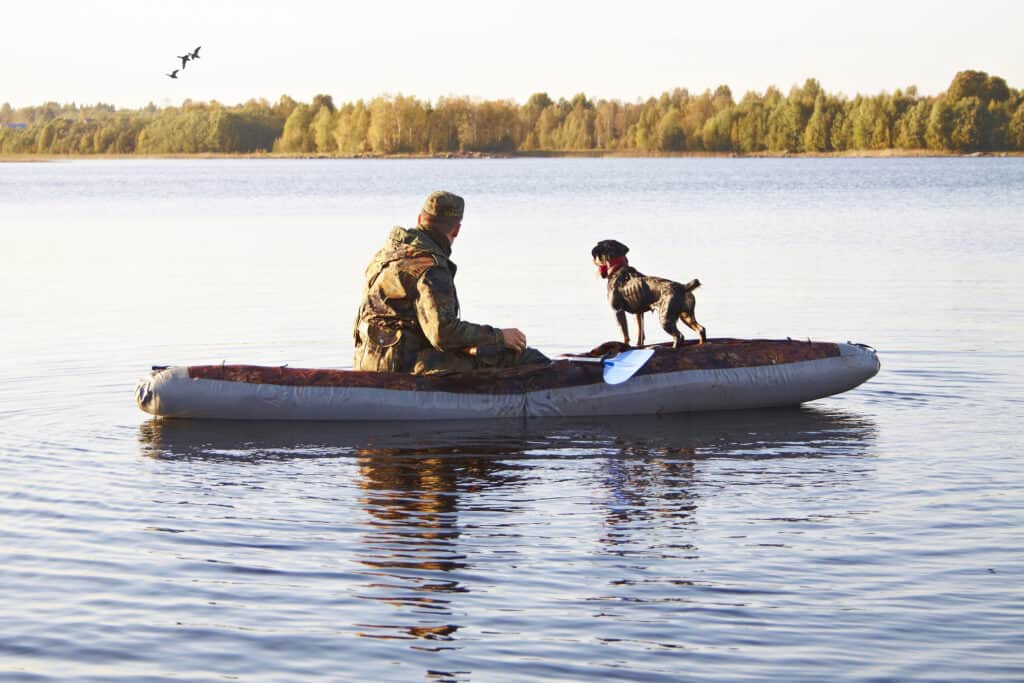
Hunters that use boats should follow all regulations. You need to be conscious of risks associated with using boats while hunting.
©Moroz Elena/Shutterstock.com
Duck hunting often becomes a shared experience among friends, family members, or hunting partners. It strengthens bonds and fosters camaraderie as individuals come together to strategize, share stories, and support each other in the field. The time spent waiting in the blind or a duck boat provides an opportunity for meaningful conversations and shared memories.
Game Meat
Duck hunting offers the chance to bring home delicious and nutritious wild game meat. Many hunters appreciate the opportunity to prepare and enjoy meals using their harvested ducks. From seared duck breast to slow-cooked duck confit, these culinary creations showcase the flavors of the wild and provide a rewarding experience for hunters and their families.
Wildlife Management
Duck hunting plays a vital role in managing waterfowl populations. Through regulated hunting seasons and bag limits, wildlife agencies ensure the sustainable harvest of ducks, maintaining balanced population levels and healthy ecosystems. This proactive approach helps prevent overpopulation and allows for preserving habitat quality and overall ecological health.
Sporting Tradition
Duck hunting has a rich history and is a cherished sporting tradition for many individuals and communities. It carries forward customs, knowledge, and values passed down through generations. By participating in duck hunting, individuals become part of a longstanding legacy that celebrates nature, conservation, and the pursuit of game responsibly and ethically.
The photo featured at the top of this post is © Moroz Elena/Shutterstock.com
Thank you for reading! Have some feedback for us? Contact the AZ Animals editorial team.






